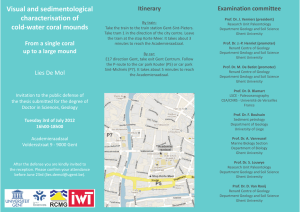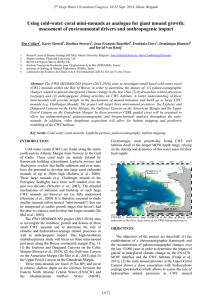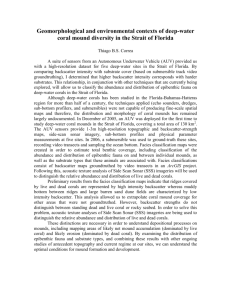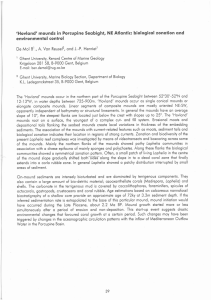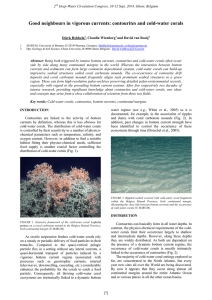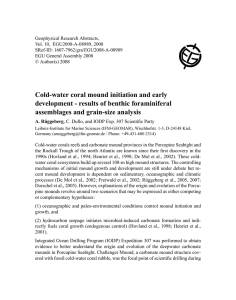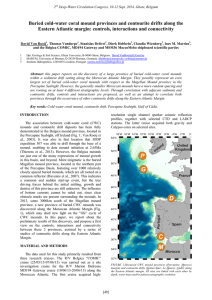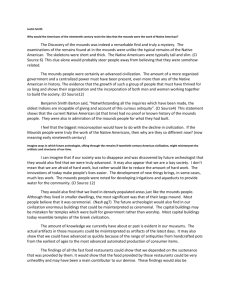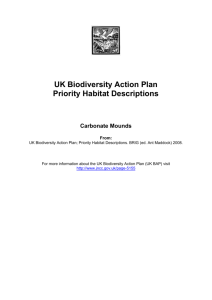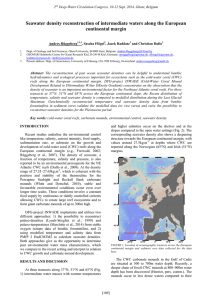Cold-Water Corals in the southern Gulf of Cadiz
advertisement
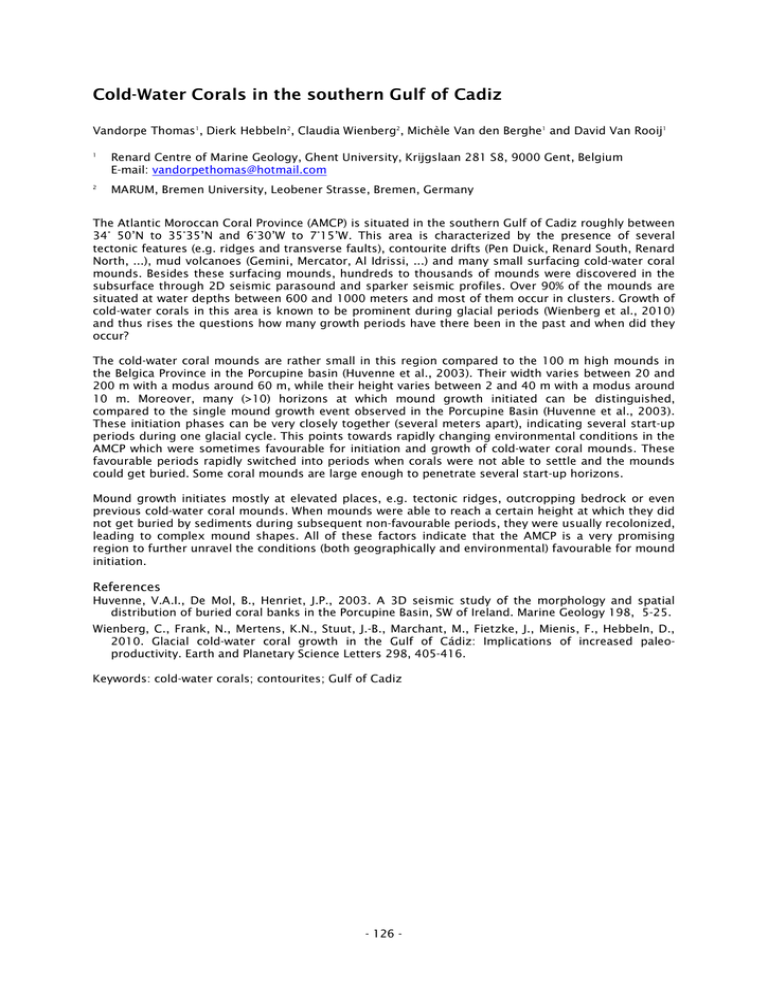
Cold-Water Corals in the southern Gulf of Cadiz Vandorpe Thomas1, Dierk Hebbeln2, Claudia Wienberg2, Michèle Van den Berghe1 and David Van Rooij1 1 Renard Centre of Marine Geology, Ghent University, Krijgslaan 281 S8, 9000 Gent, Belgium E-mail: vandorpethomas@hotmail.com 2 MARUM, Bremen University, Leobener Strasse, Bremen, Germany The Atlantic Moroccan Coral Province (AMCP) is situated in the southern Gulf of Cadiz roughly between 34° 50’N to 35°35’N and 6°30’W to 7°15’W. This area is characterized by the presence of several tectonic features (e.g. ridges and transverse faults), contourite drifts (Pen Duick, Renard South, Renard North, ...), mud volcanoes (Gemini, Mercator, Al Idrissi, ...) and many small surfacing cold-water coral mounds. Besides these surfacing mounds, hundreds to thousands of mounds were discovered in the subsurface through 2D seismic parasound and sparker seismic profiles. Over 90% of the mounds are situated at water depths between 600 and 1000 meters and most of them occur in clusters. Growth of cold-water corals in this area is known to be prominent during glacial periods (Wienberg et al., 2010) and thus rises the questions how many growth periods have there been in the past and when did they occur? The cold-water coral mounds are rather small in this region compared to the 100 m high mounds in the Belgica Province in the Porcupine basin (Huvenne et al., 2003). Their width varies between 20 and 200 m with a modus around 60 m, while their height varies between 2 and 40 m with a modus around 10 m. Moreover, many (>10) horizons at which mound growth initiated can be distinguished, compared to the single mound growth event observed in the Porcupine Basin (Huvenne et al., 2003). These initiation phases can be very closely together (several meters apart), indicating several start-up periods during one glacial cycle. This points towards rapidly changing environmental conditions in the AMCP which were sometimes favourable for initiation and growth of cold-water coral mounds. These favourable periods rapidly switched into periods when corals were not able to settle and the mounds could get buried. Some coral mounds are large enough to penetrate several start-up horizons. Mound growth initiates mostly at elevated places, e.g. tectonic ridges, outcropping bedrock or even previous cold-water coral mounds. When mounds were able to reach a certain height at which they did not get buried by sediments during subsequent non-favourable periods, they were usually recolonized, leading to complex mound shapes. All of these factors indicate that the AMCP is a very promising region to further unravel the conditions (both geographically and environmental) favourable for mound initiation. References Huvenne, V.A.I., De Mol, B., Henriet, J.P., 2003. A 3D seismic study of the morphology and spatial distribution of buried coral banks in the Porcupine Basin, SW of Ireland. Marine Geology 198, 5-25. Wienberg, C., Frank, N., Mertens, K.N., Stuut, J.-B., Marchant, M., Fietzke, J., Mienis, F., Hebbeln, D., 2010. Glacial cold-water coral growth in the Gulf of Cádiz: Implications of increased paleoproductivity. Earth and Planetary Science Letters 298, 405-416. Keywords: cold-water corals; contourites; Gulf of Cadiz - 126 -
